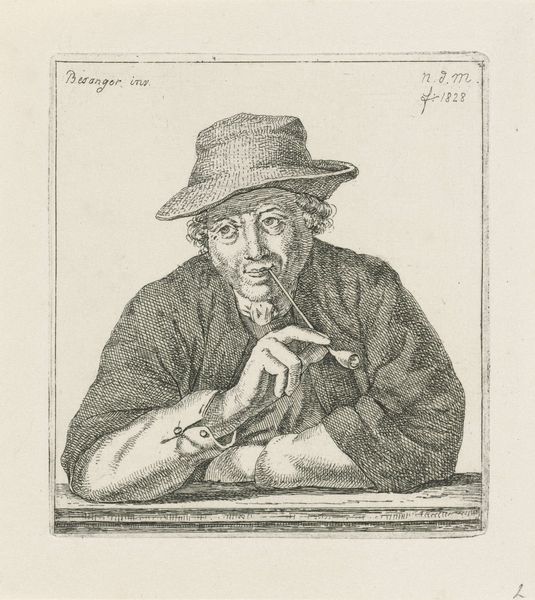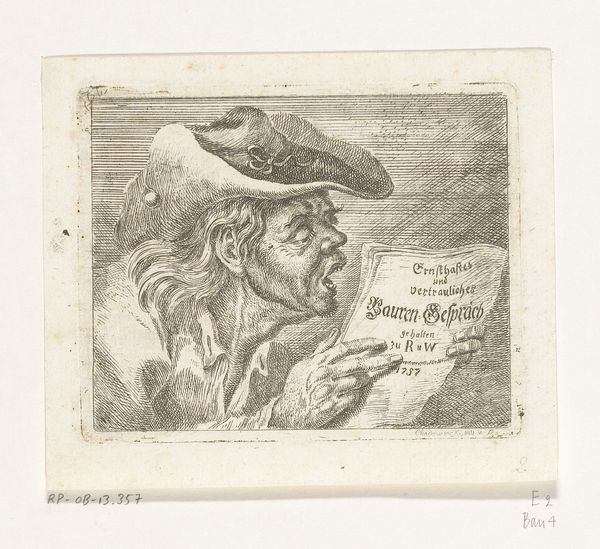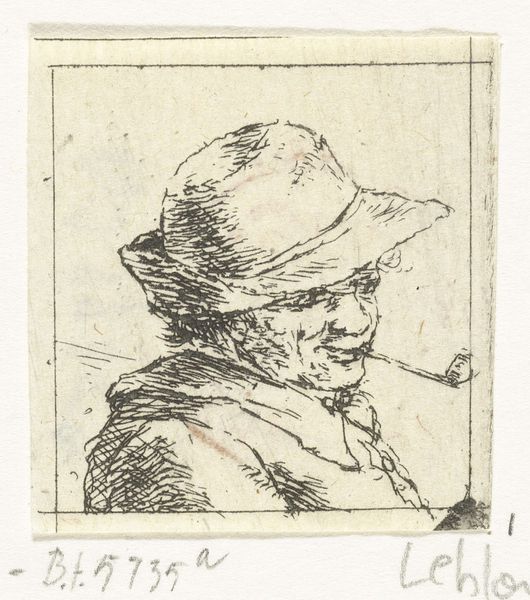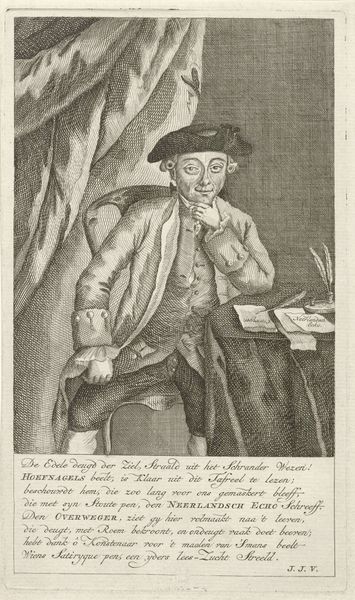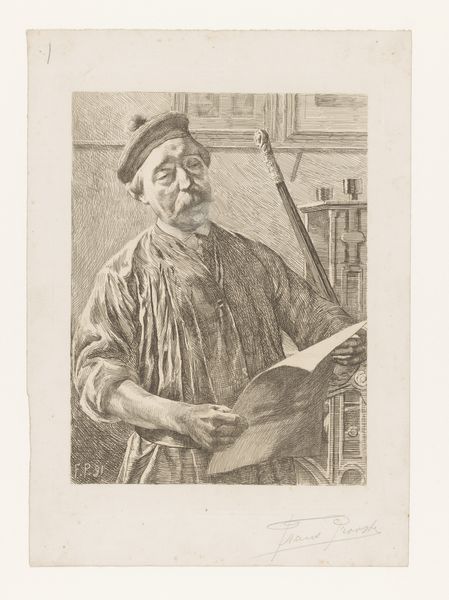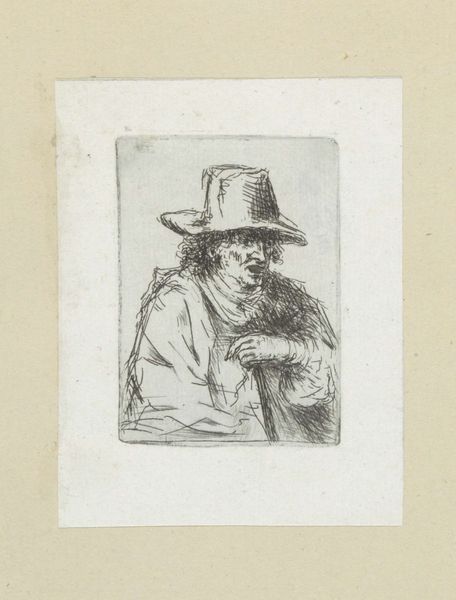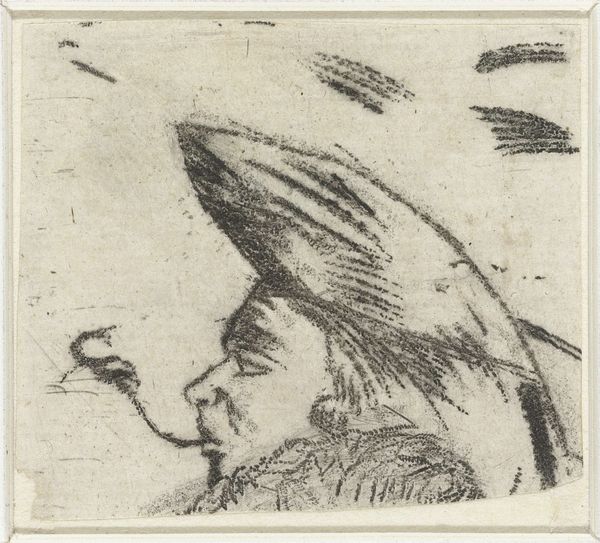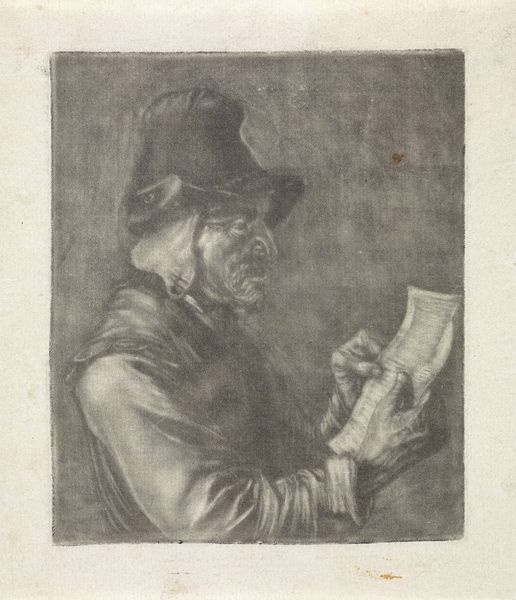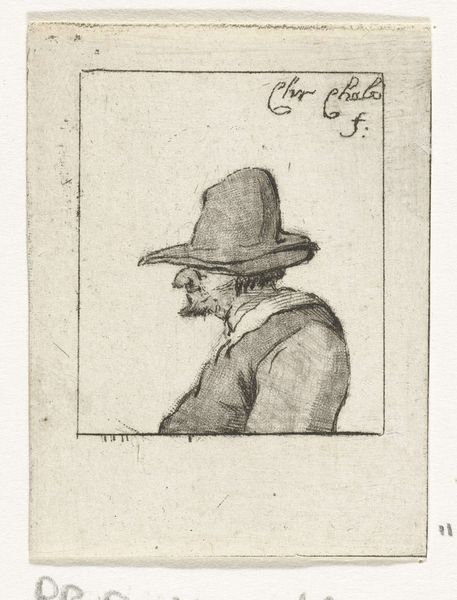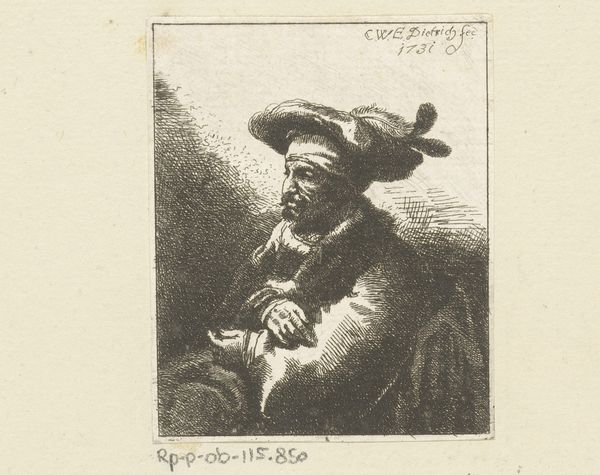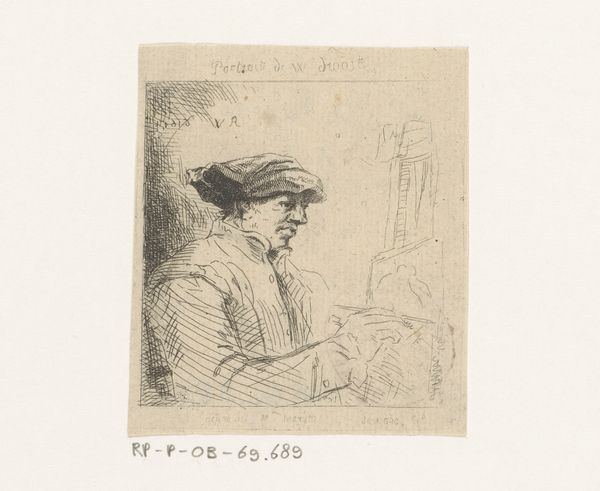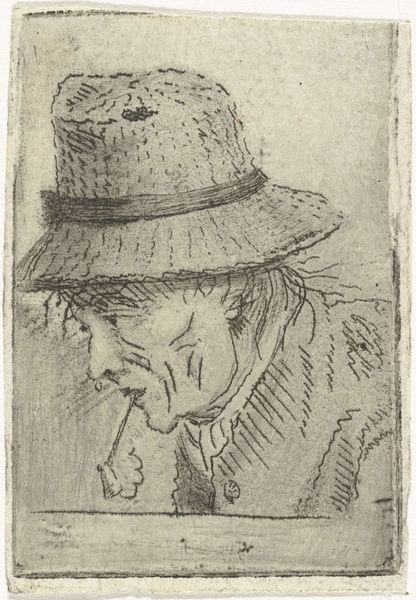
etching
#
portrait
#
etching
#
landscape
#
romanticism
#
realism
Dimensions: height 92 mm, width 136 mm
Copyright: Rijks Museum: Open Domain
Curator: This etching, made in 1828 by Anthonie Willem Hendrik Nolthenius de Man, presents us with two seemingly disparate subjects side-by-side: a man smoking and a dense thicket of plants. The work is titled "Rokende man en planten," or "Smoking man and plants." Editor: Immediately, I’m struck by the composition. The juxtaposition of the figure and the plants feels… intentional but also somewhat unresolved. It gives off a kind of lonely and observational atmosphere. Curator: Precisely. Let's think about what each side of this image means. On the right, we have a portrait of the smoking man, created using a technique which generates sharp, distinct lines, making him appear weathered and world-worn. On the left, we see natural forms: lush, almost overgrown vegetation. It's almost as if he is a surveyor taking note of nature. Editor: Or perhaps he is alienated from it. Look at how confined the man appears, leaning over what is either a small barrier, desk, or the window opening, in opposition to the untamed foliage beside him. Consider the context: Romanticism placed great importance on humankind's connection with nature. Could the separation indicate something about burgeoning urban life at the time? The rise of the individual separated from a rural way of life? Curator: That resonates. But note also the symbolism within the very act of smoking: traditionally interpreted, it represents a kind of spiritual or intellectual contemplation, the mind actively working and forming. Maybe these natural forms are only present in his thoughts, sparked by a desire to record nature in order to try and reconnect with it? Editor: The presence of text, I see it to be writing near the base of the artwork, also anchors it within that societal context. What appears in an art piece and the commentary it invites at the moment of viewing always carries a meaning of sorts, especially if the artwork's presentation invites you to ask even more questions. Curator: I agree. This contrast emphasizes, at least to me, the multifaceted human condition of longing. This resonates even today in an increasingly isolated and rapidly changing society. Editor: Indeed, this 19th-century work invites many interpretations for a 21st-century world. Its focus on how we reconcile the tensions of nature, the societal conditions of the period, and what those tensions even mean for contemporary artists seems important for all modern museum visitors.
Comments
No comments
Be the first to comment and join the conversation on the ultimate creative platform.
